Steam Days is a monthly magazine dedicated to all steam railway enthusiasts. Each issue covers the six regions of British Railways: Western, Southern, London, Midland, Eastern, and Scottish, with the occasional article on Irish railways and the industrial scene. These well illustrated articles in the magazine cover the history of the railways of Britain from the early days of the 1800s through to the end of steam on British Railways in August 1968.
Steam Days
TRAINS of thought
The Kent & East Sussex line in the early 1950s • Between 1951 and 1954 Chris Gordon Watford made a handful of visits to the Robertsbridge-Tenterden-Headcorn route, witnessing both busy commuter scenes and lengthy periods of inactivity, as well as spending time seeking out some of the line’s less photographed stopping places.
Push-pull operation by the LNER and its British Railways’ successors • Eric Stuart focuses on the push-pull duties of the LNER, also considering the schemes of the constituent companies and the services that ran post-1948 as part of the Eastern, North Eastern and Scottish regions, John Macnab collaborating to enrich this overview with coaching stock data and other specifics.
Pay just £3.83 per edition • When you take out a subscription to Steam Days (saving £1.42 per issue)
STEAM DAYS In Colour 219: The Cathcart Circle lines • The Caledonian Railway-operated Cathcart Circle lines link Glasgow (Central) to what became the southern suburbs via an out and back circular loop. The railway opened to Cathcart in 1886 and was extended clockwise into a loop back to Glasgow (Central) via Maxwell Park in 1894. Around the same time Caledonian Railway goods traffic routed via the Glasgow & South Western Railway between the industries around Lanarkshire and the Ayrshire coast was increasingly subject to congestion and delay, and this led to the promotion of the nominally independent Lanarkshire & Ayrshire Railway. This was constructed from Ardrossan via Lugton and Neilston, progressively from 1888, and made a connection at Cathcart from 1 April 1903. Less than a year later a triangle of lines had been formed at Cathcart and the line onwards to Newton via Kirkhill opened on 6 January 1904. Freight traffic would never live up to expectations due to the opening of Rothesay Dock on the Clyde in 1907 and the creation of the ‘Big Four’ in 1923 which took away competition with the G&SWR, but the suburban commuter traffic would ensure that the lines at the Glasgow end have been electrified and remain open to this day.
Stephenson Locomotive Society (Midlands Area) specials to Swindon: 1951-54 • Travelling between the Midlands and Wiltshire by four different routes, Richard Garland shines the spotlight on the first of a series of regular SLS rail tours to Swindon Works, these early tours featuring ‘Bulldog’, ‘Saint’ ‘Earl’ and LMS ‘Compound’ haulage.
Birmingham (New Street) to Walsall by Midland Railway metals Station by station • Following the path of a passenger service that ceased to operate from 18 January 1965, Stanley C Jenkins considers the steam age infrastructure of the route that crossed Sutton Park, the Castle Bromwich Junction to Walsall section of line becoming freight-only at that time.
Tail Lamp

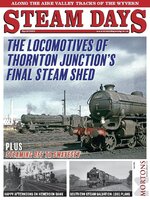 Apr 01 2025
Apr 01 2025
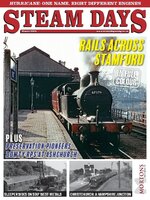 Mar 01 2025
Mar 01 2025
 Feb 01 2025
Feb 01 2025
 Jan 01 2025
Jan 01 2025
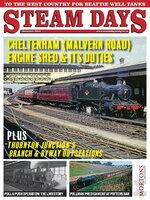 Dec 01 2024
Dec 01 2024
 Nov 01 2024
Nov 01 2024
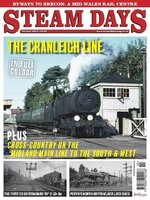 Oct 01 2024
Oct 01 2024
 Sep 01 2024
Sep 01 2024
 Aug 01 2024
Aug 01 2024
 Jul 01 2024
Jul 01 2024
 Jun 01 2024
Jun 01 2024
 May 01 2024
May 01 2024
 Apr 01 2024
Apr 01 2024
 Mar 01 2024
Mar 01 2024
 Feb 01 2024
Feb 01 2024
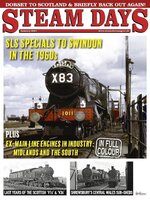 Jan 01 2024
Jan 01 2024
 Dec 01 2023
Dec 01 2023
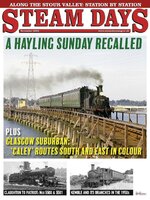 Nov 01 2023
Nov 01 2023
 Oct 01 2023
Oct 01 2023
 Sep 01 2023
Sep 01 2023
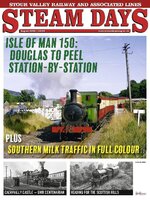 Aug 01 2023
Aug 01 2023
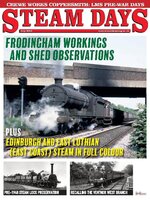 Jul 01 2023
Jul 01 2023
 Jun 01 2023
Jun 01 2023
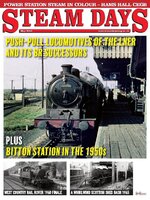 May 01 2023
May 01 2023